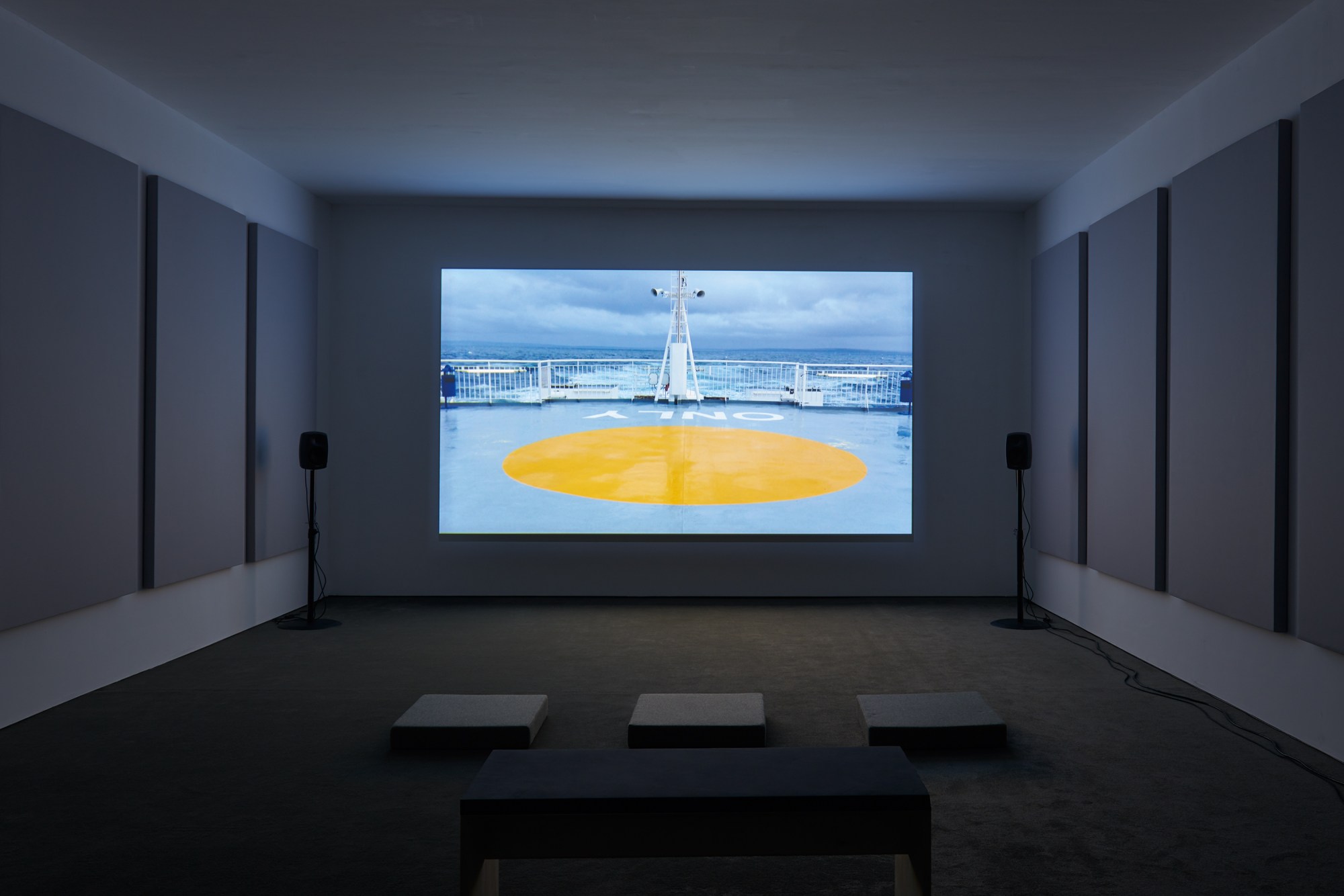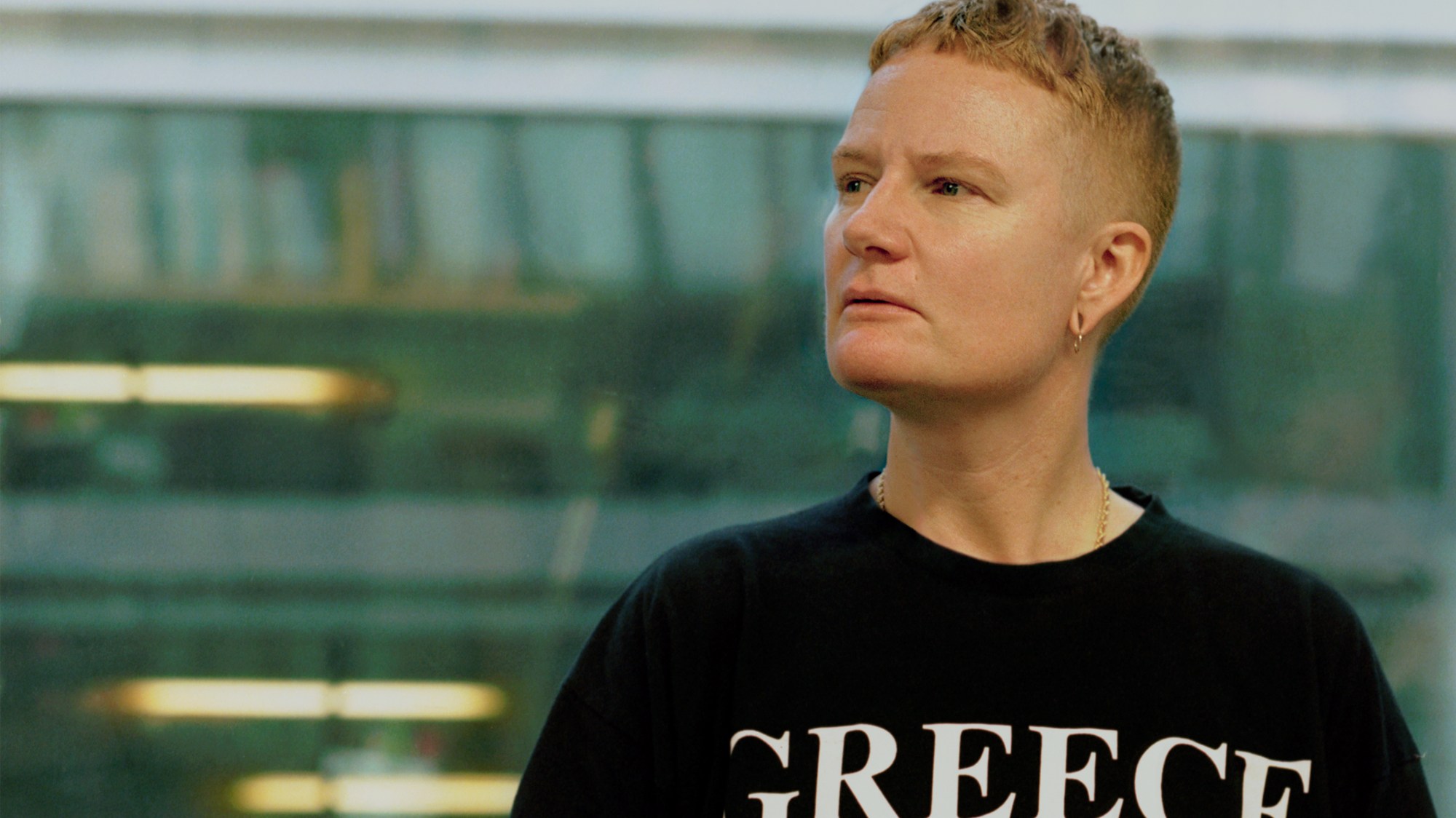This article originally appeared in The Radical Issue, no. 351, Spring 2018.
“I’m always gathering,” says the artist Charlotte Prodger. She’s sat in her studio in Glasgow, I’m in the i-D office in London. It’s the last day in January and we’re talking on FaceTime. Both of us have strips of neon light above our heads. “Always. When I’m walking, it’s a form of gathering. I’m writing all the time. I’m always gathering and thinking. That’s the way material accumulates for me. I usually need a project in order to produce.” I should declare bias here: I’m a Charlotte Prodger super-fan. Her work, especially recent films Bridgit and LHB, have had a profound effect on how I think about time and existence. She draws links between ancient and modern, showing how maybe the two are the same thing. She talks about her queerness with radical insight and honesty. She has a need for retreat, to be within the landscape.
“I’m not a city person,” she says. “It’s important for me to get away regularly to the wild. I feel very queer in those places where there are no people around. I feel queer in the city, obviously, all the time. But I still feel queer when I’m on my own in the middle of landscape. Historically, the context of most queer narratives has been urban. What does it mean when you’re away from all those signifiers to be a queer body?” Her desire for retreat is not about craving a cosy existence. “It’s definitely not a pastoral thing,” she says. “I’m not into village life. I’m talking about wild places, something animal. That thing of withdrawal is very complex. There’s this strange, complex relationship between public and private increasingly for artists these days. For me there’s this tendency for withdrawal. On the other hand, I enjoy Instagram. It’s complex.”
In the film Bridgit, first shown in October 2016 at her London gallery Hollybush Gardens, then last May at the Sculpture Center in New York, Charlotte filmed a long shot of a Scottish forest on her iPhone, while her voiceover told a detailed story of her coming out in Aberdeenshire. It was like watching the things you think about, the stories you tell yourself, when you’re on your own, within nature. “Bridgit is important to me, because it’s more personal than a lot of my other work,” she says. Previously, Charlotte had shown her films on small monitors that were part of sculptures, placed on human-sized scaffold frames. “The monitor works were a lot more removed,” she said. Now, she is making films that can be seen in a cinema environment, or a large screen constructed within a gallery. “You’re not thinking about the machine anymore,” she says. “It’s like a dream.”

Her most recent film, LHB, is audacious and real. Much of the first few minutes are shots of the Torness nuclear power station, a brutalist construction on the coast of Scotland seen from the train to Edinburgh. Over the top, Charlotte starts to talk about her obsession with the Pacific Crest Trail (PCT), a nearly 2659 mile long hike through American wilderness from the Mexican to the Canadian border. She then talks of switching screens to amateur gay porn, and the mechanics of who fucks who, and who edits the film. And then she switches back to reading the blogs of hikers on the PCT. The screen cuts to Charlotte pinching the skin of her arm in sunlight. She says that two of the blogs are by written by two different queer women, hiking along the trail at the same time, unaware of each other. And then the film cuts to footage, interspliced, of Charlotte pissing on hikes. It is so simple and yet on film it seems a radical queer gesture.
“I walk a lot,” she says. “You’ve got to piss. I piss outside a lot. I like it. Since I made the film, a lot of women have told me they like pissing outdoors. I always like thinking about my body in relationship to landscape in that way. I had been filming it for a while. Me and Cassie [Charlotte’s girlfriend] would be walking together and I’d say, ‘I’m going for a piss,’ and then I’d say, ‘Oh can you film it?’”
Right now Charlotte is waiting for sign off for projects to be confirmed. She’s thinking about making a book. She says she is a disobedient reader: that she often goes to the back of novels first. It interests her how she would control a reader’s passage through a book. “Personal narrative is very important to me,” she says. “I’m interested in the fact that each person has all these narratives, all these fragments, inside of them, experiences that they’re carrying around that are permanently being added to. It’s not so linear, the way the filing cabinet is accessed. It’s constantly contingent and shuffling.” This is the crux of her work, the heart of why it’s so moving and so instructive. “I’m just interested in that we have a complex map inside of us that isn’t necessarily linear. That’s why my work is like that I think. It’s time. Everything moves about in time and space.”

Credits
Photography Vicki King
Styling Louis Prier Tisdall
